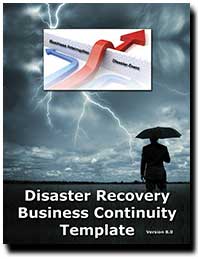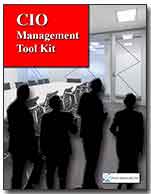26% of All Firms Faced Disaster in Last 5 Years
 Janco has found that more than a 26% of its client firms have faced some sort of a disaster over the past five years. CIOs need to convince executives in their enterprise to invest in business continuity and disaster recovery systems. CIO's need to effectively communicate that business continuity and disaster recovery planning is not just an insurance policy.
Janco has found that more than a 26% of its client firms have faced some sort of a disaster over the past five years. CIOs need to convince executives in their enterprise to invest in business continuity and disaster recovery systems. CIO's need to effectively communicate that business continuity and disaster recovery planning is not just an insurance policy.
CIOs know their systems are vulnerable and they want to do something about it. In these tough economic times, it is hard to get funding for business continuity and disaster recovery. CIOs who tie business continuity and disaster recovery planning to mandated compliance needs are more successful in obtaining the necessary funding.
Many of these same companies consider disaster recovery investment as a rolling upgrade that consistently augments existing infrastructure and application investments rather than a one-time event that can be delayed. In one research study by another firm many CIOs blamed disasters on non-natural disruptions and incidents.
The data shows that 42% of the firms surveyed said power failure was the most common cause of declared disasters and downtime, while 32% cited hardware failure, and 21% cited network failure.
Order DRP BCP Download Sample DRP BCP Lessons Learned
Business Continuity & Disaster Planning Requirements Defined
Business Continuity and Disaster Planning require data consistency with the synchronous replication of data over long-distances and / or journal replication to protect against local and wide-area disasters. This technology provides other benefits, including:
- Maintaining more efficient data currency. Using synchronous replication over a short distance in a campus or metropolitan area cluster provides the highest level of data currency without undue impact to application performance.
- Permitting swift recovery. A campus/metropolitan cluster implementation allows for fast automated failovers after a local area disaster with minimal to no transaction loss.
- Permitting recovery even when a disaster exceeds traditional regional boundaries. A wide-area disaster could disable both data centers 1 and 2, but with some manual interaction, operations can be shifted to data center 3 and continue after the disaster.
- Shifting to staffing outside the disaster area. A wide-area disaster also affects people located within the disaster area, both professionally and personally. By moving operations out of the region to a remotely located recovery data center, operational responsibilities shift to people not directly affected by the disaster.


